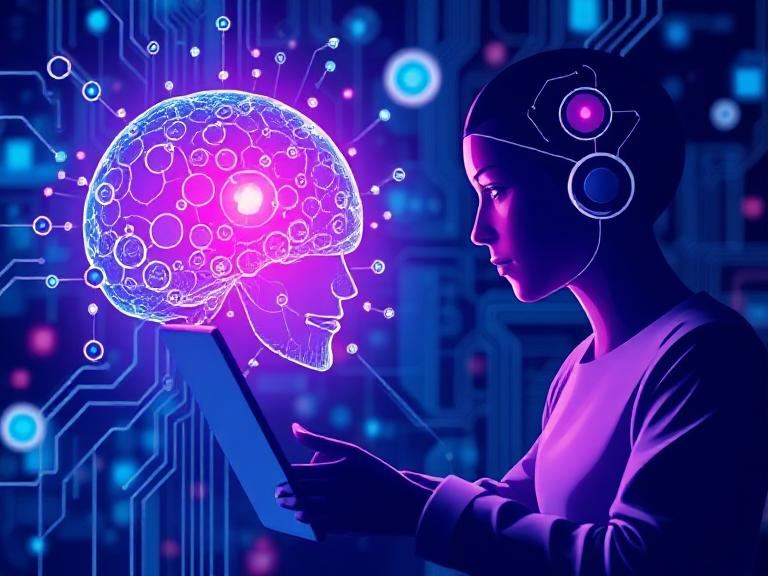Why AI is a Game-Changer for Credit Access
For decades, traditional credit scoring systems have relied on narrow metrics like credit history, income, and debt-to-income ratios. While these factors are important, they often exclude millions of people—especially those with thin credit files or no credit history at all. Enter artificial intelligence (AI). By leveraging alternative data and advanced algorithms, AI is making credit access fairer and faster , ensuring that more individuals can participate in the financial system. Let’s explore how this transformation is happening.
1. Expanding Credit Scoring Beyond Traditional Metrics
Traditional credit scores don’t tell the whole story. What about someone who pays rent on time, has a steady utility bill payment history, or manages a side hustle? These behaviors reflect financial responsibility but are often ignored by conventional systems.
With AI in credit access , lenders can now evaluate alternative data points to create a more holistic view of an applicant’s creditworthiness. For example, platforms like ZestFinance and Upstart analyze rental payments, employment history, and even social media activity to assess risk. This approach opens doors for underserved populations, including immigrants, gig workers, and young adults. To learn more, read our related article: “The Evolution of Credit Scoring with AI .”
Additionally, research from Investopedia highlights how AI models are trained to interpret non-traditional data effectively, ensuring fairness and accuracy.
2. Reducing Bias in Lending Decisions
One of the biggest criticisms of traditional lending is its susceptibility to human bias. Loan officers might unconsciously favor certain demographics over others, leading to unfair outcomes.
AI addresses this issue by using data-driven algorithms that focus solely on relevant financial behaviors, not demographic factors. While AI isn’t entirely free from bias—since it learns from historical data—it can be audited and refined to minimize discriminatory practices. This ensures that credit decisions are based on merit rather than prejudice. For insights, check out “How AI is Tackling Bias in Financial Services .”
External resources from Harvard Business Review provide case studies showing how AI tools are being tested to eliminate biases in loan approvals.
3. Faster Loan Approvals with Automation
Applying for a loan used to be a lengthy process involving piles of paperwork and weeks of waiting. Thanks to AI-powered lending , approvals can now happen in minutes.
AI automates tasks like document verification, risk assessment, and underwriting, drastically reducing processing times. For instance, platforms like Kabbage and LendingClub use AI to instantly analyze an applicant’s financial profile and determine eligibility. This speed benefits both borrowers, who get quick access to funds, and lenders, who can serve more customers efficiently. For tips, explore “How Automation is Transforming Lending .”
Learn more about the role of automation in lending through this detailed guide on Forbes .
4. Democratizing Access for Underserved Communities
Millions of people worldwide lack access to traditional banking services, leaving them financially excluded. AI is making credit access fairer by enabling mobile-first platforms to reach underserved communities.
For example, companies like Tala and Branch use AI to provide microloans to individuals in developing countries. These platforms assess creditworthiness using smartphone data, such as transaction history and app usage patterns. By offering small, affordable loans, they empower entrepreneurs and low-income households to build better futures. Learn more in “How AI is Bridging the Financial Inclusion Gap .”
For global perspectives on financial inclusion, visit World Bank , which features reports on AI-driven initiatives in emerging markets.
5. Predicting Repayment Behavior with Machine Learning
Machine learning—a subset of AI—excels at identifying patterns in large datasets. In the context of credit access, this means predicting repayment behavior with remarkable accuracy.
By analyzing past transactions, spending habits, and other behavioral data, AI models can forecast whether an applicant is likely to repay a loan on time. This reduces default risks for lenders while increasing approval rates for borrowers. For deeper insights, read “The Role of Machine Learning in Credit Risk Assessment .”
External experts at MIT Technology Review explain how machine learning models are continuously improved to enhance prediction accuracy.
6. Personalized Loan Offers Based on User Profiles
Gone are the days of generic loan offers. With AI in credit access , lenders can tailor loan terms to individual profiles. For example, if AI determines that a borrower has a high likelihood of repaying early, they might receive lower interest rates or flexible repayment options.
This personalization not only improves customer satisfaction but also encourages responsible borrowing. To see how it works, check out “How AI Creates Customized Financial Solutions .”
For real-world examples of personalized lending, head over to McKinsey & Company , where you’ll find success stories from leading fintech companies.
7. Enhancing Fraud Detection in Credit Applications
Fraudulent applications are a major concern for lenders, but AI is stepping up to combat this issue. By analyzing application data in real-time, AI-powered systems can detect anomalies and flag suspicious activity.
For instance, if multiple applications originate from the same IP address or contain inconsistent information, AI can alert lenders to investigate further. This proactive approach protects both lenders and legitimate borrowers from fraud. For more details, explore “The Role of AI in Preventing Financial Fraud .”
Deloitte Insights provides an in-depth analysis of AI’s role in fraud detection across various industries, including finance.
8. Lowering Costs for Borrowers and Lenders
Traditional lending processes are expensive due to manual labor, paperwork, and overhead costs. AI is making credit access faster and cheaper by streamlining operations.
For borrowers, this translates into lower fees and interest rates. For lenders, reduced operational costs mean higher profitability. Platforms like Affirm and SoFi demonstrate how AI can deliver affordable credit solutions without compromising quality. For strategies, read “How AI is Cutting Costs in the Lending Industry .”
Visit PwC to discover how AI-driven cost reductions are reshaping the competitive landscape of the lending sector.
9. Empowering Consumers with Transparent Insights
AI doesn’t just benefit lenders—it empowers consumers too. Many AI-driven platforms provide users with transparent insights into their credit profiles, explaining why they were approved or denied.
For example, apps like Credit Karma and Experian Boost use AI to educate users about improving their credit scores. This transparency fosters trust and encourages better financial habits. For more, see “How AI is Educating Consumers About Credit .”
External content from Consumer Financial Protection Bureau (CFPB) explores how AI-powered educational tools are helping consumers take control of their financial futures.
Conclusion
AI is making credit access fairer and faster by breaking down barriers, reducing bias, and empowering underserved populations. Whether it’s through alternative data analysis, automated approvals, or personalized loan offers, AI is revolutionizing the lending landscape. As this technology continues to evolve, we can expect even greater inclusivity and efficiency in the financial ecosystem. The future of credit access is here—are you ready to embrace it?
FAQs
- How does AI improve credit scoring?
AI evaluates alternative data points like rent payments and utility bills to create a more comprehensive credit profile. - Can AI help people with no credit history get loans?
Yes, AI analyzes non-traditional data to assess creditworthiness for those without formal credit histories. - Is AI-powered lending secure?
AI enhances security by detecting fraudulent applications and protecting sensitive data through encryption. - How fast can AI approve a loan?
AI-powered platforms can approve loans in minutes by automating document verification and risk assessment. - What are some examples of AI-driven lending platforms?
Examples include Upstart, ZestFinance, Tala, and Affirm.
Three-Word Keywords (Comma-Separated Format):





